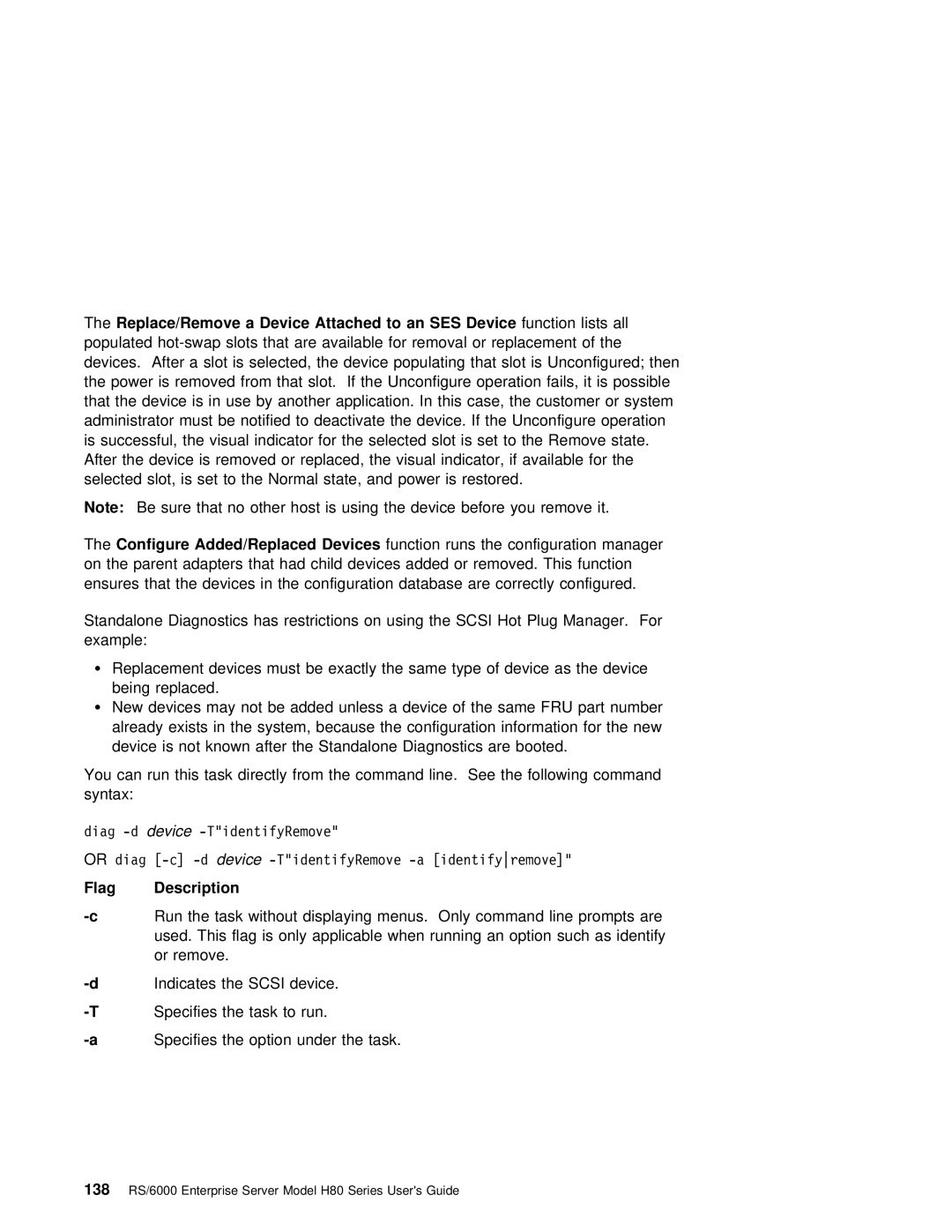The Replace/Remove a Device Attached to an SES Device | function lists | all |
|
| |||
populated | replacement | of | the | ||||
devices. After | a slot | is | selected, the | device populating | that slot is Unconfigured; th | ||
the power is | removed | from | that slot. If | the Unconfigure | operation | fails, | it is possib |
that the device is in use by another application. In this case, the customer or sys
administrator | must | be notified | to | deactivate | the device. If the Unconfigure operation | |||||||||||
is successful, the visual indicator for | the | selected | slot is | set to | the Remove state | |||||||||||
After the device is removed | or replaced, the visual indicator, if available for the | |||||||||||||||
selected | slot, | is | set | to | the Normal state, | and | power | is | restored. |
| ||||||
Note: Be | sure | that | no | other | host is using the device before you remove it. | |||||||||||
The Configure | Added/Replaced | Devices |
|
| function | runs | the | configuration | manager |
| ||||||
on the parent adapters that | had | child | devices | added or removed. This function | ||||||||||||
ensures | that | the | devices | in | the | configuration database | are | correctly | configured. | |||||||
Standalone Diagnostics has restrictions on using the SCSI Hot Plug Manager. For example:
ŸReplacement devices must be exactly the same type of device as the device being replaced.
ŸNew devices may not be added unless a device of the same FRU part number already exists in the system, because the configuration information for the new
device is not known after the Standalone Diagnostics are booted.
You can run this task directly from the command line. See the following command syntax:
diag
OR diag
Flag | Description |
|
|
|
|
|
|
| |
Run | the task without | displaying | menus. Only | command | line prompts | are | |||
| used. This | flag is | only applicable when | running an | option such | as identify | |||
| or | remove. |
|
|
|
|
|
|
|
Indicates | the | SCSI | device. |
|
|
|
| ||
Specifies the task to run. |
|
|
|
| |||||
Specifies | the | option | under the | task. |
|
|
| ||
138 RS/6000 Enterprise Server Model H80 Series User's Guide
